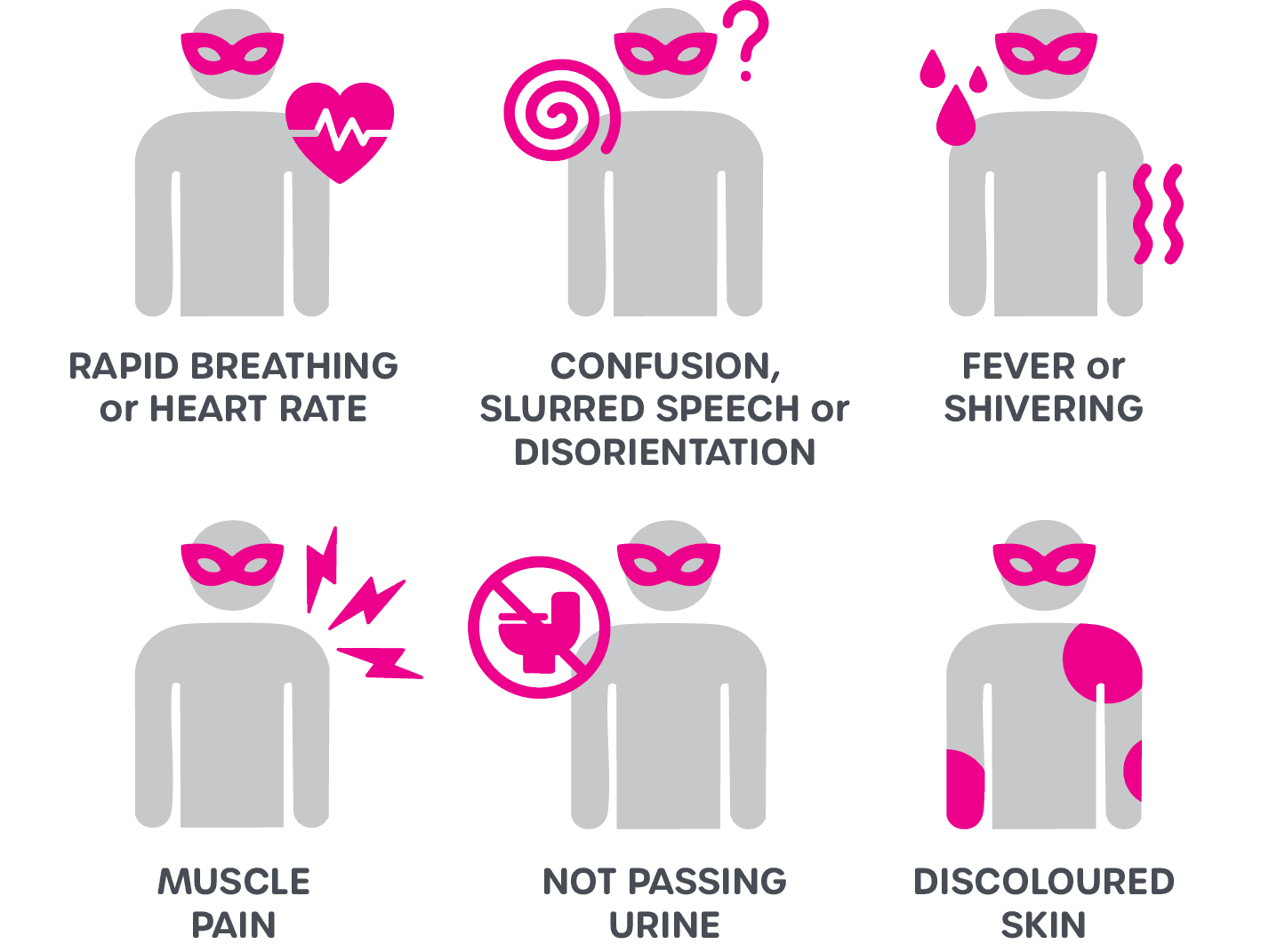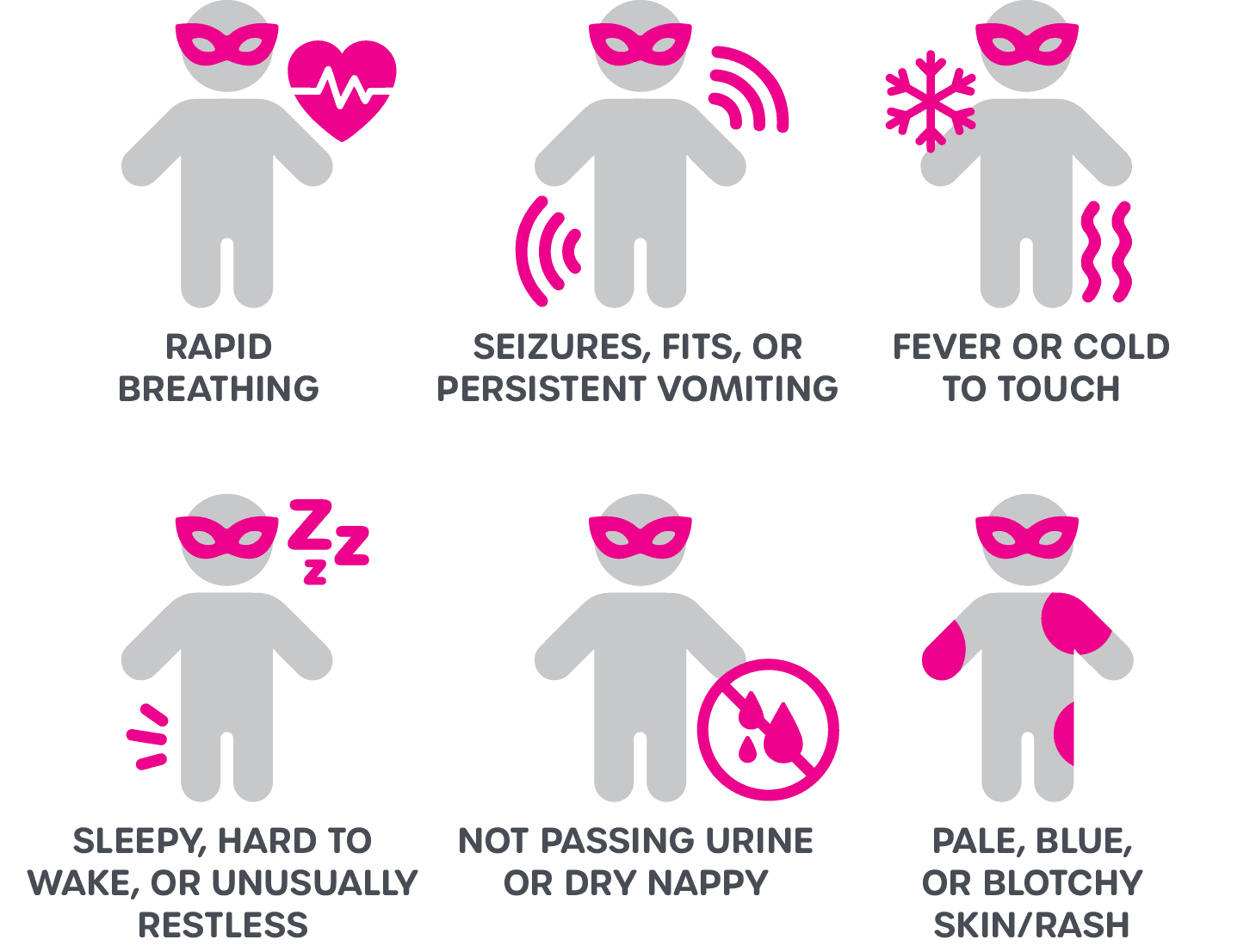What is Sepsis?
Diagnosis and Treatment
Recognising sepsis can be challenging, as there is no single sign, symptom, or diagnostic test for it. Symptoms may present like typical flu or infections.
It is when there are small changes in various signs and symptoms, combined with a person feeling or appearing extremely unwell—especially when the cause is unclear—that a person should seek urgent medical attention and a clinician should diagnose and treat with urgency.
For example:
Small changes in multiple signs and symptoms such as temperature, drowsiness, rapid breathing, little to no urine output
In some cases, it may be just one sign or symptom
A person feeling or appearing extremely unwell – worse than normal
When the cause of illness is unclear
Symptoms of sepsis can differ between adults and children, making early recognition crucial.
Clinicians must prioritise parental concerns as a vital component of assessment and treatment, recognising that parents have unique insight into their child's health. Their intuition and observations often serve as early indicators of deterioration, reinforcing the importance of listening to parental voices in the diagnostic process.
By acknowledging and acting on parental concerns, healthcare providers can improve early intervention, ultimately enhancing outcomes for children at risk of sepsis.
Suspecting sepsis in anyone who is severely ill and could potentially have an infection, even if not confirmed, can save lives. Those with sepsis require immediate and aggressive treatment, including escalation to a senior clinician. They are also likely candidates for hospital admission, often to an Intensive Care Unit.
In cases of suspected infection and unclear diagnosis, the early administration of antibiotics is crucial to controlling the infection—each hour of delay increases the risk of death or lifelong disability by 8-10%.
In addition to listening to the patient and patient’s families, clinicians will screen for sepsis through a series of tests that determine infection, type of infection, organ function, level of inflammation in the body’s blood.
Signs of sepsis can include ANY of the following:




